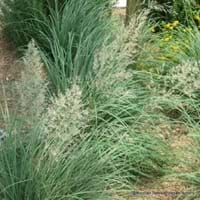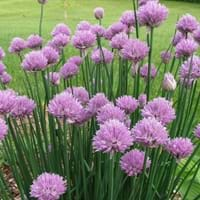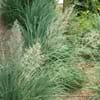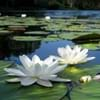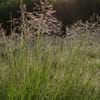Life Span
Perennial
Perennial
Origin
North America, United States, Southwestern United States, Texas, Mexico
World/Pandemic, North America, Europe, Asia
Types
Foxtail muhly, Devils Canyon muhly, alkali muhly
Common chives, Garlic chives, Siberian garlic chives, Giant Siberian chives
Number of Varieties
Not Available
Habitat
High elevation, Hillside, Slopes
Rocky areas
USDA Hardiness Zone
7-10
4-9
Sunset Zone
Not Available
A1, A2, A3, H1, H2, 1a, 1b, 2a, 2b, 3a, 3b, 4, 5, 6, 7, 8, 9, 10, 11, 12, 13, 14, 15, 16, 17, 18, 19, 20, 21, 22, 23, 24
Habit
Clump-Forming
Clump-Forming
Flower Color
Pink, Purple, White
White, Pink, Lavender
Flower Color Modifier
Bicolor
Not Available
Fruit Color
Brown, White
Black
Leaf Color in Spring
Light Green, Blue Green
Green, Light Green
Leaf Color in Summer
Light Green
Green
Leaf Color in Fall
Blue Green, Gray Green
Green, Yellow green
Leaf Color in Winter
Blue Green, Gray Green, Tan
Not Available
Leaf Shape
Grass like
Grass like
Plant Season
Summer, Fall, Winter
Spring, Summer, Fall
Sunlight
Full Sun, Partial Sun, Partial shade
Full Sun, Partial Sun
Growth Rate
Medium
Medium
Type of Soil
Clay, Loam, Sand
Loam, Sand
The pH of Soil
Acidic, Neutral
Neutral
Soil Drainage
Well drained
Well drained
Bloom Time
Early Fall, Fall
Late Spring, Early Summer
Tolerances
Drought
Not Available
Where to Plant?
Container, Ground, Pot
Ground, Pot
How to Plant?
Divison, Seedlings
Seedlings, Transplanting
Plant Maintenance
Medium
Medium
Watering Requirements
Needs less watering, Water every 3 weeks until the root ball is wet
Requires regular watering, Water every two or three days during warmer months, Water when soil is dry
In Summer
Lots of watering
Lots of watering
In Spring
Moderate
Moderate
In Winter
Average Water
Average Water
Soil pH
Acidic, Neutral
Neutral
Soil Type
Clay, Loam, Sand
Loam, Sand
Soil Drainage Capacity
Well drained
Well drained
Sun Exposure
Full Sun, Partial Sun, Partial shade
Full Sun, Partial Sun
Pruning
Grass Cuttting and pruning up to 5cm, Prune in early spring, Remove damaged leaves, Remove dead branches, Remove dead leaves
Prune in spring, Prune in summer, Prune to stimulate growth, Remove deadheads
Fertilizers
All-Purpose Liquid Fertilizer, EDTA iron
All-Purpose Liquid Fertilizer
Pests and Diseases
Red blotch
Bacterial leaf spot, Damping-off, Downy mildew, head rot, Pink Root, Rust, Thripes
Plant Tolerance
Drought
Drought
Flower Petal Number
Single
Single
Fragrant Bark/Stem
No
Yes
Foliage Texture
Fine
Fine
Foliage Sheen
Matte
Matte
Attracts
Bees, Butterflies
Not Available
Allergy
Pollen
Asthma, Diarrhea, Itchiness, Pain and fatigue, Skin rash
Aesthetic Uses
Ground Cover
Not Used For Aesthetic Purpose
Beauty Benefits
Not Available
Not Available
Environmental Uses
Air purification, soil erosion prevension on hill slopes, Wildlife
Air purification
Medicinal Uses
Not Available
Antioxidants, Bone strength, Improve heart health, Nutrients
Part of Plant Used
Not Available
Leaves, Seeds
Other Uses
Used as Ornamental plant
Employed in herbal medicine, Used As Food
Used As Indoor Plant
No
Yes
Used As Outdoor Plant
Yes
Yes
Garden Design
Dried Flower/Everlasting, Foundation, Groundcover, Mixed Border, Rock Garden / Wall
Alpine, Cutflower, Edible, Herb / Vegetable, Mixed Border, Rock Garden / Wall
Botanical Name
MUHLENBERGIA emersleyi
ALLIUM schoenoprasum
Common Name
Bull Grass
Chives, Cultivated Chives, Garden Chives
In Hindi
Bull Grass
Chives
In German
Bull Grass
Schnittlauch
In French
Bull Herbe
Ciboulette
In Spanish
Bull Hierba
Cebollino
In Greek
Δελτίο Grass
βολβοί φαγώσιμοι
In Portuguese
touro grama
Cebolinha
In Polish
Bull Trawa
Szczypiorek
In Latin
Bull Grass
Sectivi porri
Phylum
Magnoliophyta
Spermatophyta
Class
Liliopsida
Liliopsida
Order
Cyperales
Asparagales
Genus
Muhlenbergia
Allium
Clade
Angiosperms, Commelinids, Monocots
Angiosperms, Monocots
Tribe
Eragrostideae
Not Available
Subfamily
Chloridoideae
Allioideae
Number of Species
Not Available
Season and Care of Bull Grass and Chives
Season and care of Bull Grass and Chives is important to know. While considering everything about Bull Grass and Chives Care, growing season is an essential factor. Bull Grass season is Summer, Fall and Winter and Chives season is Summer, Fall and Winter. The type of soil for Bull Grass is Clay, Loam, Sand and for Chives is Loam, Sand while the PH of soil for Bull Grass is Acidic, Neutral and for Chives is Neutral.
Bull Grass and Chives Physical Information
Bull Grass and Chives physical information is very important for comparison. Bull Grass height is 45.72 cm and width 60.00 cm whereas Chives height is 203.00 cm and width 15.20 cm. The color specification of Bull Grass and Chives are as follows:
Bull Grass flower color: Pink, Purple and White
Bull Grass leaf color: Light Green and Blue Green
Chives flower color: White, Pink and Lavender
- Chives leaf color: Green and Light Green
Care of Bull Grass and Chives
Care of Bull Grass and Chives include pruning, fertilizers, watering etc. Bull Grass pruning is done Grass Cuttting and pruning up to 5cm, Prune in early spring, Remove damaged leaves, Remove dead branches and Remove dead leaves and Chives pruning is done Prune in spring, Prune in summer, Prune to stimulate growth and Remove deadheads. In summer Bull Grass needs Lots of watering and in winter, it needs Average Water. Whereas, in summer Chives needs Lots of watering and in winter, it needs Average Water.
